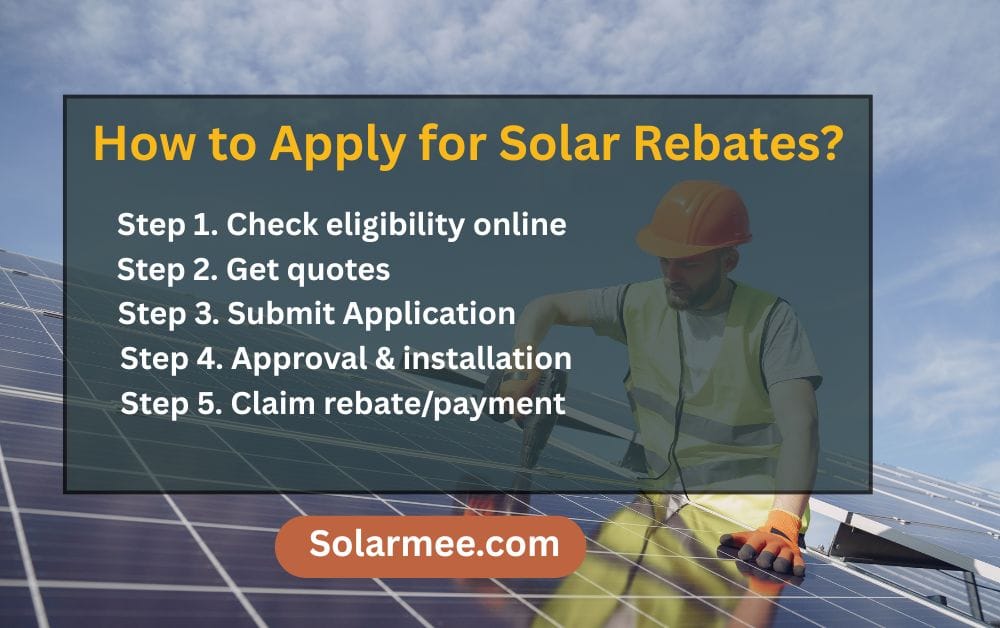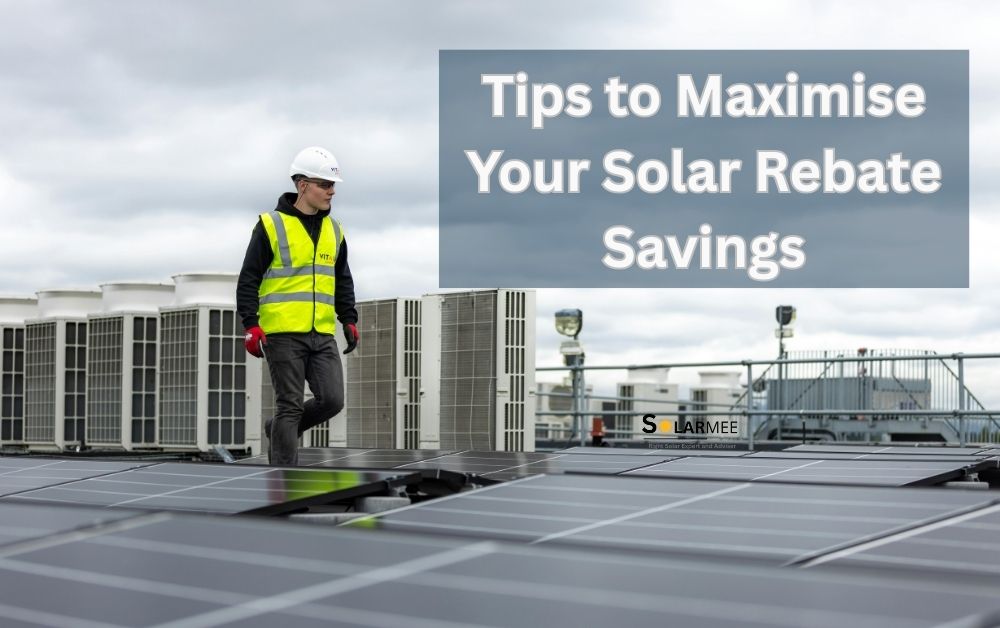The adoption of solar energy in Adelaide has been on the increase in recent years as individuals and companies demand a way out of the increasing electricity bills and achieve sustainable energy. Due to the high level of sunshine in South Australia, solar systems provide high levels of energy output and high payback rates, with the majority of households paying even after two or three years of installing the systems.
The key to low costs is the solar power government rebate in Adelaide, which incorporates both federal incentives, such as Small-Scale Technology Certificates (STCs), and local ones, such as the City of Adelaide rebate. They are rebates, essentially initial discounts, and most of these rebates are automatic, making it dramatically easier to install solar.
What is the Solar Power Government Rebate in Adelaide?
Solar Power Government Rebate Adelaide is a subsidy that assists households and companies in cutting down the initial cost of installing solar systems. It is primarily focused on promoting the use of clean energy, reducing energy payments, and accelerating the conversion of South Australia to renewables. It has two types, which are the solar panel rebate and the solar battery rebate.
Mostly the panel rebate comes in the form of the federal Small-scale Technology Certificates (STCs) scheme, which can reduce costs by 2530%. Battery rebates are associated with the new Cheaper Home Batteries Program (since July 2025), which offers up to a 30% discount on battery installations or approximately $372 per usable kWh in home battery rebates to eligible households.
Upfront rebates are immediate rebates provided at the time of installation by your installer. Subsidies can consist of additional state or council subsidies, topped by federal subsidies. Feed-in tariffs compensate you per additional solar energy going to the grid as bill credits instead of per-unit savings. The combination of these incentives claims a solar power government rebate, a smart move to take at the very beginning of the journey of Adelaide residents with energy security and affordability.
Also Read: Step-by-Step Guide for Solar Panel Installation in South Australia
Eligibility Criteria for Adelaide Solar Rebates
The solar power government rebate in Adelaide is judged as being open and therefore accessible to most households and small enterprises. Core federal rebates have no income requirements; both high- and low-income applicants are eligible so long as their property is owner-occupied or tenanted with the permission of the owner. In order to be eligible to claim the Adelaide government solar panel rebate, the system ought to utilize Clean Energy Council (CEC)-approved panels and inverters, in addition to being linked to the electricity grid. In the case of the residents in the City of Adelaide, the extra rebates are up to 20 percent of the cost of the panels for owners, tenants, and concession card holders.
The eligibility criteria of Adelaide government solar battery rebates have additional specifications: The battery should be Virtual Power Plant (VPP)-compatible, with the capacity to subsidize between 5 and 50 kWh (installations of up to 100 kWh can be eligible, but only the first 50 kWh can be subsidized), and installed by a CEC-approved installer. Solar-battery systems that are newly installed and those that are retrofitted are eligible.

Step-by-Step Guide: How to Apply for Solar Rebates in Adelaide
| Step | Action | Details |
| 1 | Check eligibility | Review eligibility criteria online via the SA Government or City of Adelaide websites. |
| 2 | Get quotes | Obtain quotes from Clean Energy Council-accredited solar providers. |
| 3 | Submit application | Apply via the City of Adelaide’s SmartyGrants portal or through your solar installer. |
| 4 | Approval & installation | Wait for application approval, then proceed with installation by your chosen installer. |
| 5 | Claim rebate/payment | Receive a rebate as an upfront discount or cashback after installation completion. |
Adelaide Solar Panel Rebate Explained
The Adelaide Government solar panel rebate subsidizes the initial funding cost of installing solar panels through the provision of financial incentives in regard to the size of the system. The federal Small-scale Technology Certificates (STCs) are one of the key rebates that are implemented as an automatic discount by your certified installer. In the case of a 6.6 kW system in Adelaide, a typical system would produce approximately 55 STCs, and at an average of $38 per certificate, this would save approximately 2090.
Moreover, the City of Adelaide has a solar rebate, which is 20 percent of the cost of the installation, but it is limited to 1,000 dollars on systems of less than 10 kW. This implies that given a system that costs 6000, the city rebate can make it 1000 less, and when the federal rebate is added, it can be saved at a total of around 3000.
An increase in solar will occur as many Adelaide households will be able to afford solar using these rebates, and the savings on energy bills will be faster, and clean energy adoption will increase. The systems must be installed by providers that have been accredited by the Clean Energy Council.
Adelaide Solar Battery Rebate Explained
An additional incentive, which was introduced by the Adelaide Government solar battery rebate, is one that provides an additional incentive to households that add battery storage to their solar system. Beginning July 2025, the federal Cheaper Home Batteries Program offers an initial discount of between 30 and 35 percent off the price of Clean Energy Council (CEC)-certified batteries up to the first 50 kWh or so of storage at approximately $372 for every kilowatt-hour (kWh) of storage.
This rebate will make installing the batteries cheaper to enable the households to store the excess solar energy to be used during peak hours or when the power goes off, hence not totally depending on the grid.
Battery and solar panel systems are the best way to achieve maximum energy independence and savings since you are able to consume the self-generated power at any time. In order to be eligible for the Adelaide Government solar battery rebate, the battery should be VPP-capable, be installed by an accredited installer, and be connected to solar on the roof, as well as have a usable capacity between 5 and 50 kWh. This rebate assists families who intend to upgrade their solar systems to store clean energy at an affordable cost.

Tips to Maximise Your Solar Rebate Savings
- Get solar quotes with several accredited solar installers through the Clean Energy Council to get the most affordable price and quality of service, and claim as many rebates as possible. Known local installers are familiar with the special rebate schemes and policies in Adelaide.
- Install on time to get the best rebate because the policies on rebates, or the money, may end, and you can get the highest rebate possible.
- Include your solar rebate with the feed-in tariffs, giving you credits in the amount of excess electricity your household delivers to the grid, adding to your overall payback.
- Take into account the size of the system you need, depending on the amount of energy used in your home. The larger systems can have more savings in the long run, but will have rebate eligibility, and the cost of installation will be kept at par.
These tips and the collaboration with trusted installers make it easier to work out how to claim the Adelaide solar rebate and return to the government with the best bargain. Installation timing should be planned to gain maximum advantages, and the correct quotes should be used.
Common Questions About Solar Rebates in Adelaide
- Can renters apply? Yes, there are a few rebates renters can apply for, particularly local council rebates such as the City of Adelaide battery rebate. The installations of solar panels normally need the permission of the landlord.
- Is there any rebate for business? Yes, small businesses can access federal and local solar rebates, including solar panels and battery storage, through some local programs, including the Small-scale Renewable Energy Scheme.
- How do the rebates change in the future? Rebates can be reduced, or eligibility requirements can be altered. Approval in place is, in general, respectable only to the extent that we must keep abreast of the times to profit to the full.
Clarify misconceptions: Rebates are primarily offered as first-time discounts and not refunds after installation. Through shared or community solar programs, renters are able to benefit. Rebates are also highly beneficial, even though some are being phased out by 2030.
Also Read: Solar Power Government Rebate Sydney
Conclusion
The solar rebates will bring solar power to the people of Adelaide, as it will be easier to purchase and bring energy savings faster. Now is the most convenient time to install solar panels and battery storage with government incentives such as federal and local rebates. Check your eligibility now, through official government websites, to see which rebates are available on your property and system.
The sooner you save, the better; the more value you get back in the form of rebates, and policies may change. Refer to a qualified solar installer who is known locally in Adelaide and follows this step so that they can take you through the application procedure and make sure that you get all the available rebates. Missing these great incentives that make clean energy affordable and workable is not an option.
Bring your solar journey up-to-date with professional guidance on how to claim solar rebates in Adelaide and have a happier and more economically sustainable future.

I am Vanshika, a passionate writer, digital marketer, and explorer of ideas. With expertise in SEO, social media, content creation, and website design, I combine creativity with strategy to deliver impactful digital solutions. Writing is my way of sharing knowledge, sparking curiosity, and building meaningful connections with readers. Through my blog Vanshi’s Exploration, I share unique insights on finance, travel, technology, and future-forward thoughts that inspire and inform.




